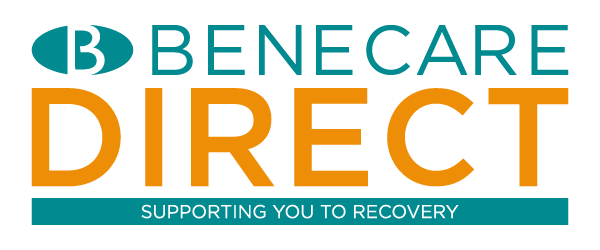When you’re injured, it’s not just the physical pain that hurts, is it? Watching from the side-lines as your team romp to victory without you, missing out on the marathon you’ve been training towards for six months, or looking through the window of your gym, pining for the machines you can’t use – it can be really demotivating.
Whatever your regular sport or gym routine, it quickly becomes the itch you need scratch. And when an injury takes you out of the game, that denial can hurt mentally as much as physically.
Call it FOMO, but really it’s fear of losing your strength, level of fitness, or place on the team. But fear not, because every athlete encounters injury at some point. And whilst it’s true that a period of rest really is the best medicine at first, the time comes when you can put your trainers on, step back into the gym, and return to action, even if slowly and carefully.
Follow these steps to ensure you’re back to your best sooner rather than later, and with fewer setbacks.
First, speak to your doctor.
It’s vital to seek the opinion of an expert before you throw yourself back into training. They’re best placed to offer advice on what type of exercises are safe for you, and how much you should be doing.
Moderate or careful exercise is still possible.
Depending on the severity of your injury, you may still be able to keep a reduced exercise regime up, and maintain a base level of fitness. We’ve got some great advice on keeping fit whilst resting an injury here. It’s also vital to remember that putting extra strain on your healthy joints may put them at risk too. So consider using a brace or splint to relieve some of the pressure.
Even once you feel ready to start training, you may wish to ease in with low-impact activities like stretching-based classes – like yoga or pilates – or with a few sessions in the pool. These will help you test your fitness levels without aggravating your injuries.
Hold back on your first day.
You might find yourself able to push that little bit more weight, or run that bit further, but it’s best to hold back. You may be benefiting from the energy your body stored whilst resting, which is fine for your good joints, but could overstress your injured ones and cause a relapse.
Don’t try to make up lost ground too quickly.
As a rule of thumb, an injury that takes ten days to recover from will take a further ten days before you begin to return to your pre-injury fitness levels when you start training again. If you’ve been able to keep up a moderate exercise regime in the meantime, this time may be reduced. Don’t rush it, don’t push it.
Patience and preparation win the race.
No, you won’t be back to your personal best straight away. But soon enough, you will. And if you’re patient, careful and willing to listen to a bit of sound advice, you’ll soon be back to your best and your time on the sofa will fade away into memory. And don’t forget that covering your injured joint with a support or brace is a great way to protect your injury. It’ll reduce your chances of suffering a relapse, and give you the confidence to get back into the swing of things again.
We wish you a great recovery, and a new PB!
